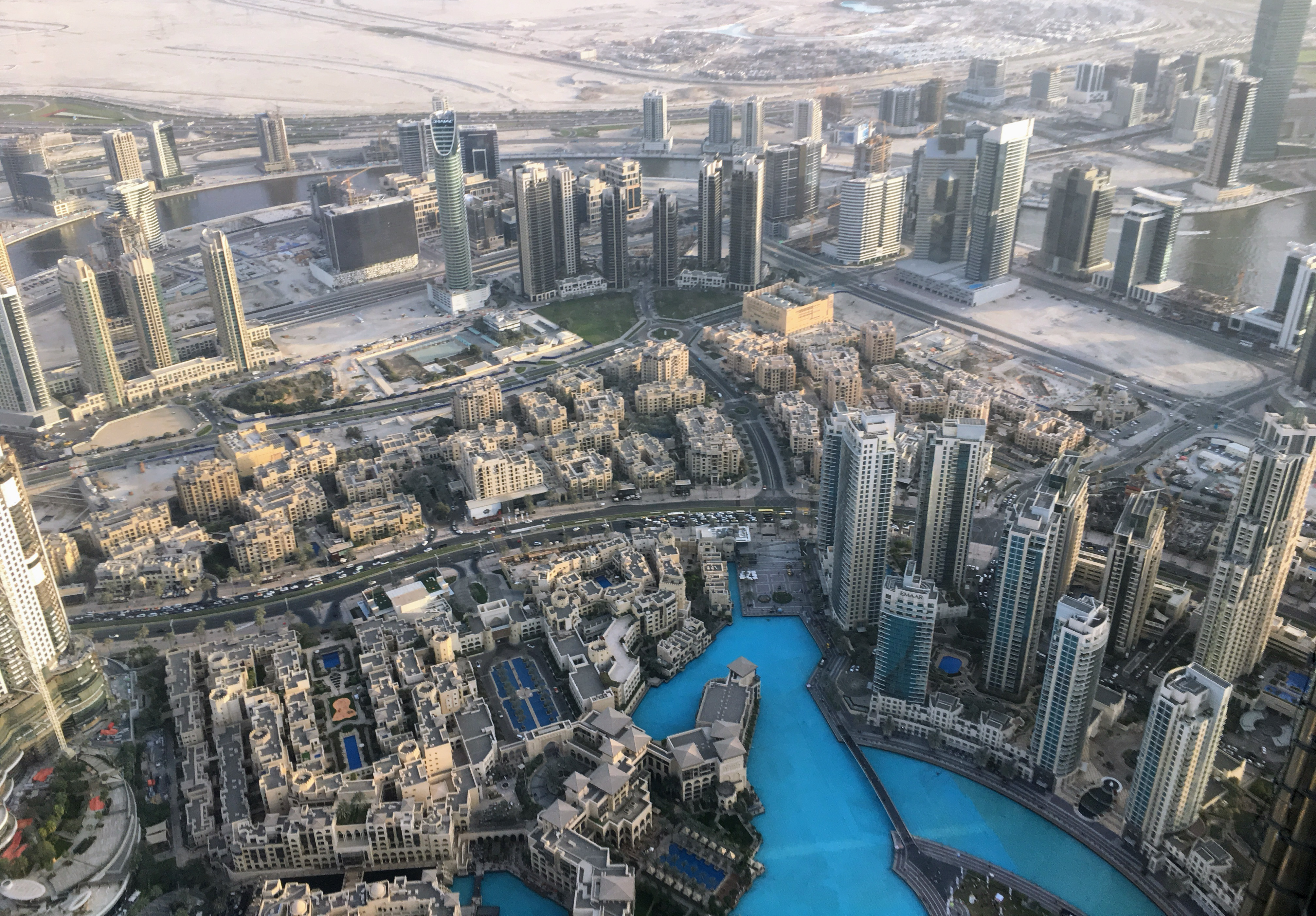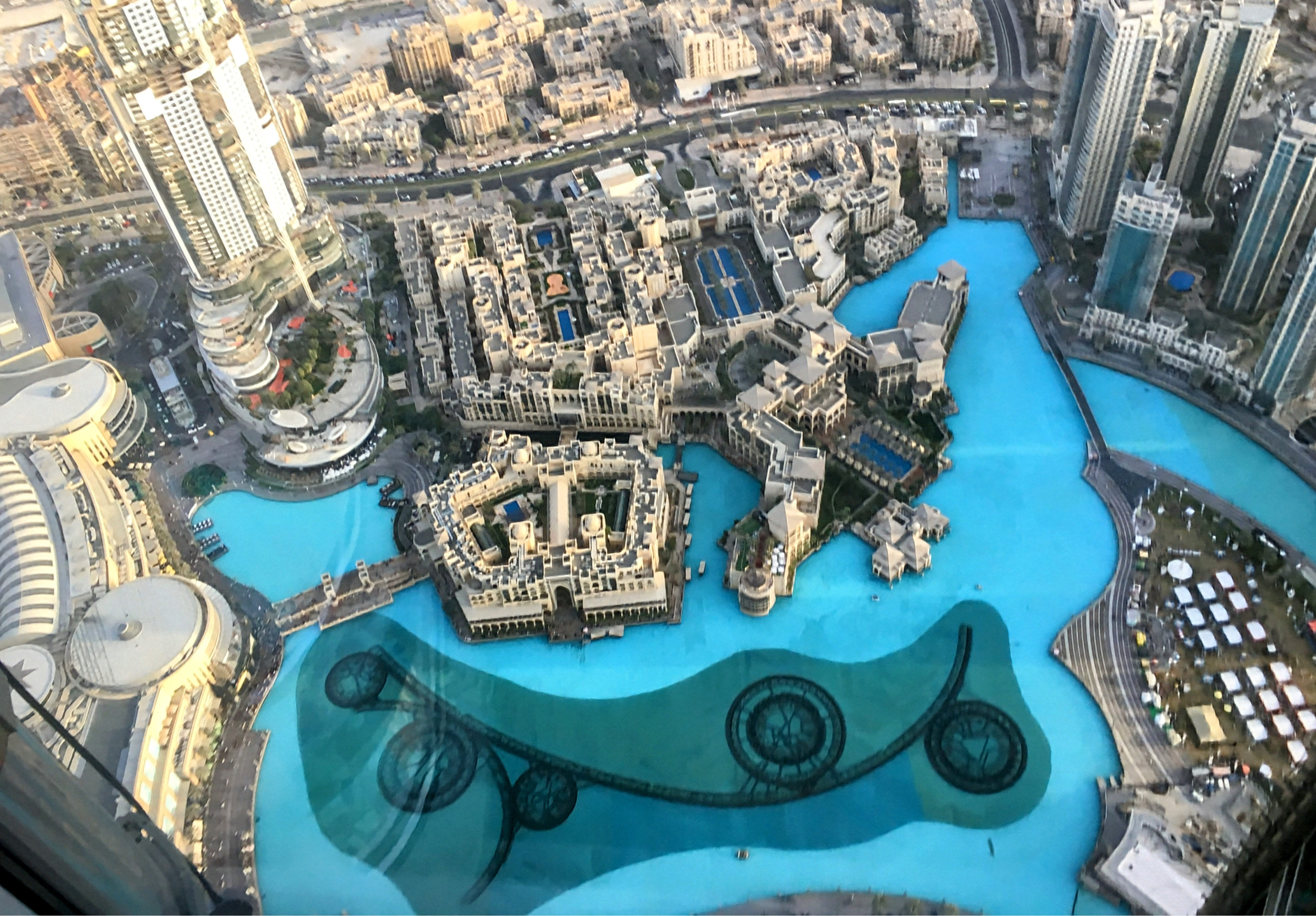2.) The population of Dubai in 1960 was only 34,000
In 1960, the total population of Dubai was only 34,000 people. The population in Dubai has since exploded by nearly 9,000%, now at an estimated three million according to UN data.
Now that’s what I call a population boom!
Dubai Population Growth (1950-2025)
3.) 88% of the UAE population is foreigners
In the UAE, 88% of the total population are foreigners, while Emiratis are only 11%. That means 11.06 million out of the 12.50 million population are foreigners from countries around the world.
In case you were wondering how a population of 133,000 could reach 12.50 million in only two to three generations, foreigners are your answer. According to statistics from Global Media Insights, here are the top three countries foreign expats in the UAE come from:
- India (37.95%),
- Pakistan (16.72%)
- and Bangladesh (7.38%)
I have lived as an expat for nearly a decade, and I am used to being under 5% of the population. The UAE, Dubai city in particular, flips that narrative on its head. The UAE is a country created for a minority, built on the backs of foreign expats.
Emirati vs. Expatriates in the UAE
4.) The Burj Khalifa in Dubai holds the record for the world’s tallest building
The Burj Khalifa in Dubai has held the record for the world’s tallest building since 2009. The Burj Khalifa stands at a height of 2,717 feet (828 meters) and has 163 floors with the highest observation deck at floor 143.
While traveling in South Korea and visiting China, I have seen half of the world’s tallest buildings. The Burj Khalifa forever ruined visiting any tall skyscrapers for me; it is truly a sight to behold.
Pro Tip: When visiting the Burj Khalifa, make a reservation to eat at the At.mosphere Lounge on the 122nd floor.
The price is similar to visiting the observation deck, and you get to sit and enjoy the view for hours.
Since nearly three thousand feet isn’t quite good enough, Dubai began building the Dubai Creek Tower in 2016. The Dubai Creek Tower will reach a mind-blowing 4,265 feet (1,300 meters) high, enough to overtake the height of an ongoing project in Saudi Arabia meant to dethrone the Burj Khalifa. Alas, another victim of Covid-19, both buildings have construction delays, so the Burj Khalifa gets to hold on to its title for a bit longer.
In the UAE, being the best, biggest, richest or tallest is a big deal. Despite its ambitions, the UAE isn’t always able to be the biggest or best. Here are some other superlatives where they don’t quite make the cut:
❗
Bonus Fun Fact: Dubai is home to over 300 artificial islands.
Dubai contains over 300 artificial islands along the 45-mile coastline of the Arabian Gulf. The most famous among them are Palm Jumeirah, shaped like a palm tree, the World Islands, resembling the world map, and the Burj Al Arab, home to the world’s first “seven star” luxury resort.
5.) The Dubai International Airport is the busiest airport in the world for international passengers
The Dubai International Airport might not be the largest, but it does have the most international passengers in the world. On an average day in the Dubai Airport, 240,000 international passengers will fly in or out of Dubai, for a total of 86,994,365 passengers every year. The only airport in the world with more passengers, including domestic and international, is the Hartsfield–Jackson Atlanta International Airport.
According to the Airport Council International’s 2024 analysis, these are the world’s 10 busiest airports.
Dubai Mall
6.) There are hidden pork rooms in supermarkets throughout Dubai
![Plate of chicken rice served in a restaurant in the UAE.]()
Pork might not always be on the menu, but chicken will always have your back.
Instead of displaying pork products in the normal section of supermarkets, there are isolated back rooms filled with all of the mouth-watering pork temptations. Muslims aren’t allowed to consume pork or any non-halal products, but Dubai’s economy wouldn’t thrive without catering to the global visitors and expats.
It might feel like going into the 18+ video section of an old video rental store, but the good news is that non-muslims who visit Dubai can still get their hands on all of the Swedish Eggs they want.
❗
Bonus Fun Fact: Alcohol used to only be “legally” consumed by foreign tourists or residents with a special alcohol license
Alcohol consumption is strictly controlled in the UAE. Until recently, only foreign tourists and licensed resident foreigners could consume alcohol. Today, restrictions are looser, but alcoholic drinks are still only served in licensed hotels or clubs, and public consumption remains illegal.
7.) The Dubai police force drives cars like the Ferrari FF and Lamborghini Aventador
Dubai’s police force patrols the city in style with a fleet of supercars like the Ferrari FF and Lamborghini Aventador. The goal of this special fleet of cop cars: show off the city’s wealth and extravagance, solidifying its place as a world-class city and popular tourist destination.
The Dubai police force will have plenty of free time to patrol around in their Ferraris since Dubai is part of the top safest cities in the world. In 2024, the Dubai police reported only 31.4 major crimes per 100,000 people. Compare that to the violent crime rate of 732 per 100,000 people in Los Angeles.
Maybe it’s the lack of Lamborghinis.
8.) Robot jockeys helped stop child labor in camel races in Dubai
In Dubai, traditional camel racing has embraced modern technology with the introduction of robot jockeys. In the past children were often used as jockeys for camel races throughout the Middle East due to their light weight. The UAE banned jockeys under 15 in 2002, and other nations like Qatar soon followed.
A Qatari engineer invented the first robot jockey for camel racing in 2003. Handlers mount robot jockeys on camels and control them remotely while driving alongside in SUVs. To keep their beloved sport alive, the UAE and Qatar fully adopted robot jockeys for camel races in Dubai and across the Middle East.
9.) Dubai Built the World’s Longest Gold Chain for a Festival
In 2015, Dubai created the world’s longest gold chain called the Dubai Celebration Chain. A hundred craftsmen worked 45 days and used four million, 24-carat gold links to create the gold chain for the Dubai Shopping Festival. The chain weighed in at a whopping 530 pounds (240 kilograms) and stretched over 3 miles (5 kilometers).
For those seeking a luxurious souvenir, the Dubai Gold and Jewellery Group later separated and sold bite-sized portions of a mere eight to 26 grams of the 24-carat gold links. At the current price of $87.76 per gram of 24 carat gold, over $700 for the smallest section is a bit out of the typical magnets and key chains souvenir budget.








